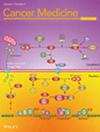Retinal Oxygen Kinetics and Hemodynamics in Choroidal Melanoma After Iodine-125 Plaque Radiotherapy Using a Novel Structural-Functional Imaging Analysis System
Abstract
Background
To investigate the changes in retinal oxygen kinetics and hemodynamics in patients with choroidal melanoma (CM) within 2 years before and after iodine-125 plaque radiotherapy (PRT) using a novel noninvasive structure-functional imaging analysis system.
Methods
A novel noninvasive cost-effective imaging analysis system that integrates multimodal structural and functional retinal imaging techniques has been used, which allows rapid acquisition of vascular structural, hemodynamic, and oxygenation metrics using multispectral imaging (MSI) and laser speckle contrast imaging (LSCI) techniques. Follow-ups have been arranged at the time before plaque implantation surgery, and 1 month, 3 months, 6 months, 12 months, 18 months, and 24 months after iodine-125 plaque removal.
Results
CM patients after PRT demonstrated a significant decrease in retinal arterial oxygen concentration (CO2a), arterial oxygen saturation (SO2a), oxygen utilization (SO2av, CO2av), and metabolism (oxygen extraction fraction, OEF) over time. However, there was no significant difference in SO2 and CO2 compared with healthy controls. Systolic time (Time_sr), acceleration time index (ATI), and resistivity index (RI) gradually increase over time; ATI and RI were significantly higher than those of the healthy controls. At baseline, mean arterial blood flow velocity (BFVa) and mean arterial retinal blood flow (RBFa) in CM eyes were significantly higher than those in the healthy control group. BFVa and RBFa showed a decreasing trend over time after PRT. In addition, some retinal oxygen kinetics and hemodynamic indicators were also correlated with tumor size, patient gender, and age.
Conclusion
CM patients after iodine-125 plaque radiotherapy had significant retinal and vascular changes. Future research should focus on rapidly screening radiation microvascular complications and exploring more timely and effective interventions to protect visual function in CM patients.


 求助内容:
求助内容: 应助结果提醒方式:
应助结果提醒方式:


